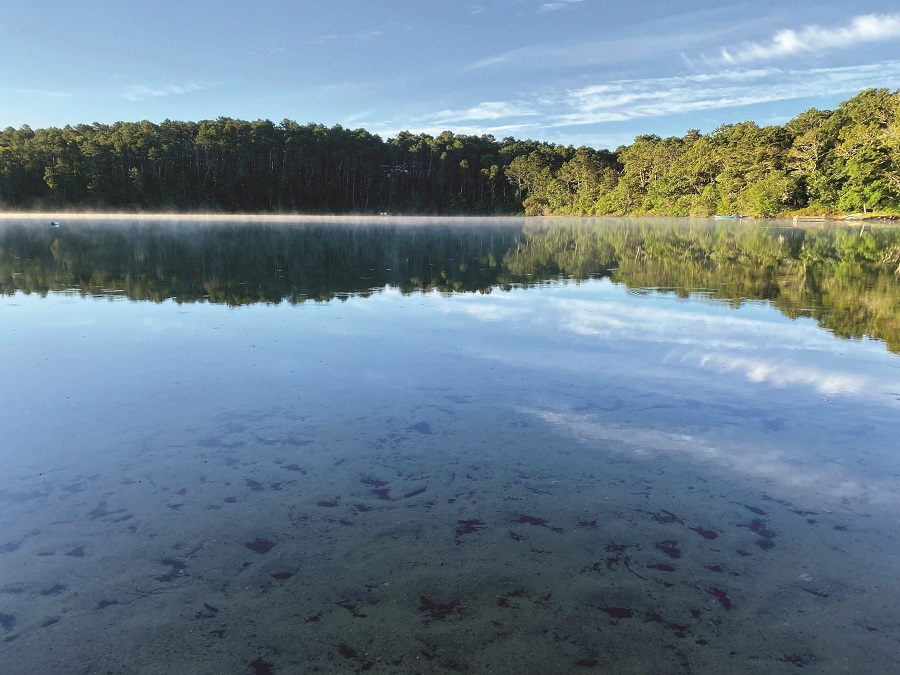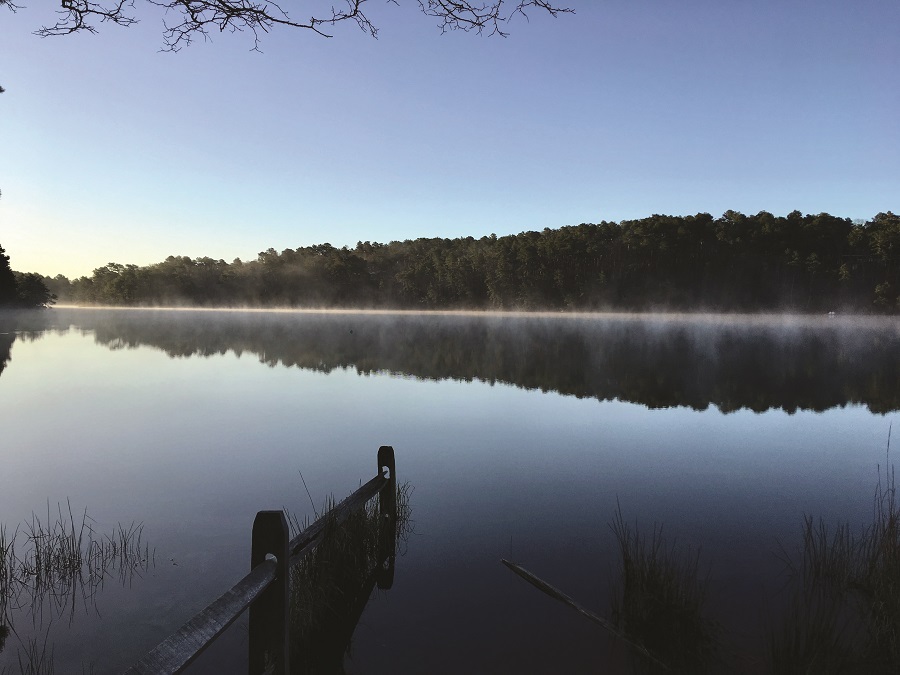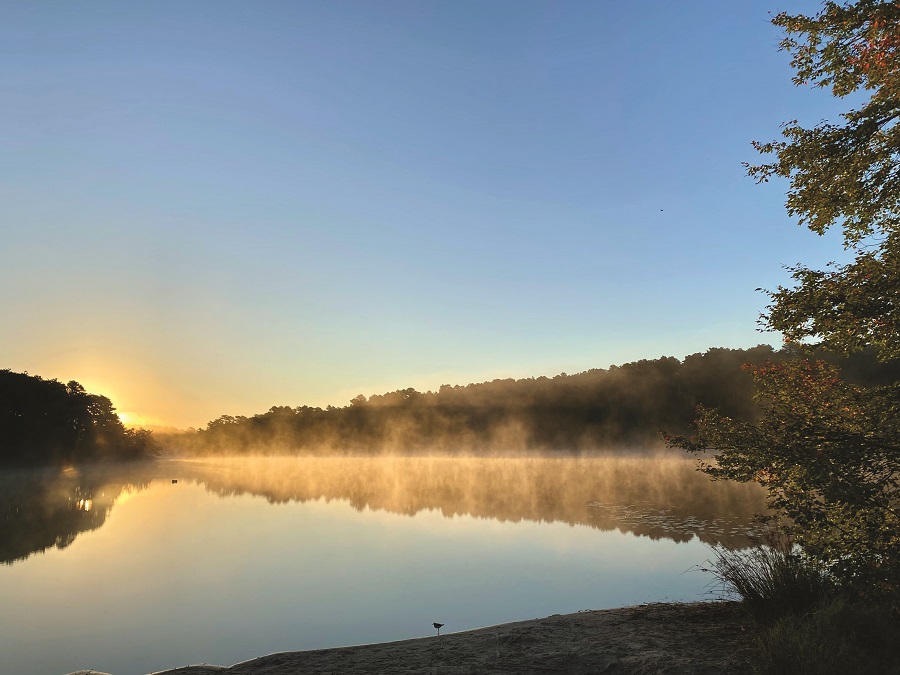I was driving home from the ocean along a winding road, windows open, the air heavy with humidity. The dusk sky of a late summer evening was settling rich and purple over the tops of the pines. The road swung a wide turn down a hill along the north edge of Long Pond, and the sky appeared below now, reflected on the oil-smooth surface of the water. Black trunks of pines clipped the view into frames as if it were a roll of film. The air cooled. My breath came more freely. A thought appeared that felt like a fact: “I’ve got to swim.”

I pulled off the asphalt where the sandy trail met the road and ran down the path. It was dark enough now that I ran by feeling, my feet telling me their experience of the trail: Soft, cool sand, loose like grains of sugar; pine needles, stiff and sharp; knobby, satin-smooth roots. Then the tickle of sedges and reeds; cool, damp sand that holds footprints; and water, just a bit cooler than the outer edges of my body, at my toes, ankles, shins, knees, thighs, everywhere.
Every cell of my skin was feeling the water, every nerve sending a message to my brain that it felt something: touch, pressure, movement, cool. It was nearly overwhelming. It’s not often that something aside from air touches the entirety of your body all at once. Immersing myself in the pond, my body came to life.
I grew up around these ponds, swimming in their daytime colors, gold and green, every day of the summer, and skating and walking them in the winter when they froze black and solid.
At my bus stop in the late fall on cold mornings, I would watch the steam pull away from the edges and grow dense and tall over the pond’s middle. One spring, an eagle came and stayed for a week in our neighborhood. It ate one of our chickens. My brothers and my mom and I watched it hunt for a duck at the pond. For an entire morning, the duck quacked like mad and dove into the water, eluding the eagle over and over again until it finally grew tired of the game and took off.
Back then, I thought it was normal to be surrounded by ponds. But the longer I’ve lived near them, the less usual they seem. A pond is an absolute wonder.

At the edges of roads and the ends of narrow paths, our ponds are giant puddles in the sand that tell the genesis story of this place. They sit nestled into gentle depressions in the landscape, surrounded by soft banks and hills.
These banks that surround the ponds are sediment berms left by glacial meltwater. As the glaciers that formed the Cape receded, massive chunks of ice were left in the outwash plain. They sat, stubborn, refusing to pull back northward, and nestled down into the sand as the silt-rich meltwaters sloshed at their edges, burying them with earth.
These tenacious ice blocks eventually melted and left deep holes in the new land they had sculpted. As the sea level rose, the groundwater lens heaved up and filled the holes. Kettle ponds. They’re full of groundwater and recharged with rainwater and the sparkling meltwater of snowfalls.
These ponds are cauldrons of life. Whole ecosystems have grown within and around them. Algae, pickerelweed, pipewort, woolgrass, and water lilies sit saturated in them. Bass, herring, and pickerel glide soundlessly in their dark depths. Frogs sit with heavy eyelids in their warm shallows. Turtles, too. Water striders, waterboatmen, mayflies, and damselfly larvae skim the surface.

Above the surface that divides two worlds are iridescent dragonflies, ducks with invisible paddles, and ospreys grasping fish in arcing talons, flying off to coarse nests atop trees and cell towers to feed their young. Black roots of clethra and gray roots of red maple reach into the pale sandy banks. In the night, deer, coyotes, and foxes move silently through networks of paths and low tunnels in brambles to the dark edge to eat and drink.
We, too, are a part of the life sustained by these ponds. On warm evenings, if we walk down the sandy paths to their cool air and still shores, we enter their ecosystem. We move, skin alive with feeling, into a place that is both foreign and home. Every cell the water touches vibrates into awareness. Blue dragonflies hang on stained-glass wings, red maples flash the silver undersides of their leaves in humid gusts. The low hills and jagged pines soften to silhouettes, and violet skies rest above.



